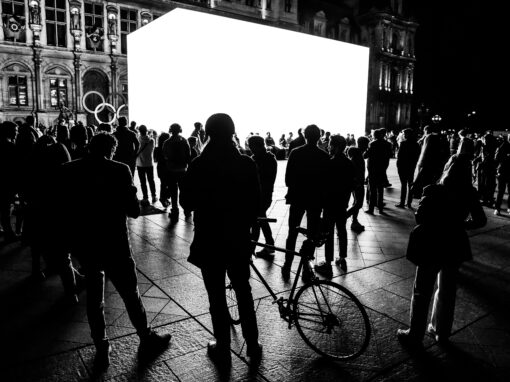It’s often said that photography, like music and dance, is a universal language.
I have proof of that in my hands.
The text of Whiteness in Černobyl, by Marco Cortesi is in Italian. While the book’s title is in English, and “Černobyl” is obvious, I cannot read a word inside—not the introduction, not the captions, not whatever is said at the end.
“Whiteness in Černobyl” by Marco Cortesi
Published by Crowdbooks, 2024
Review by W. Scott Olsen
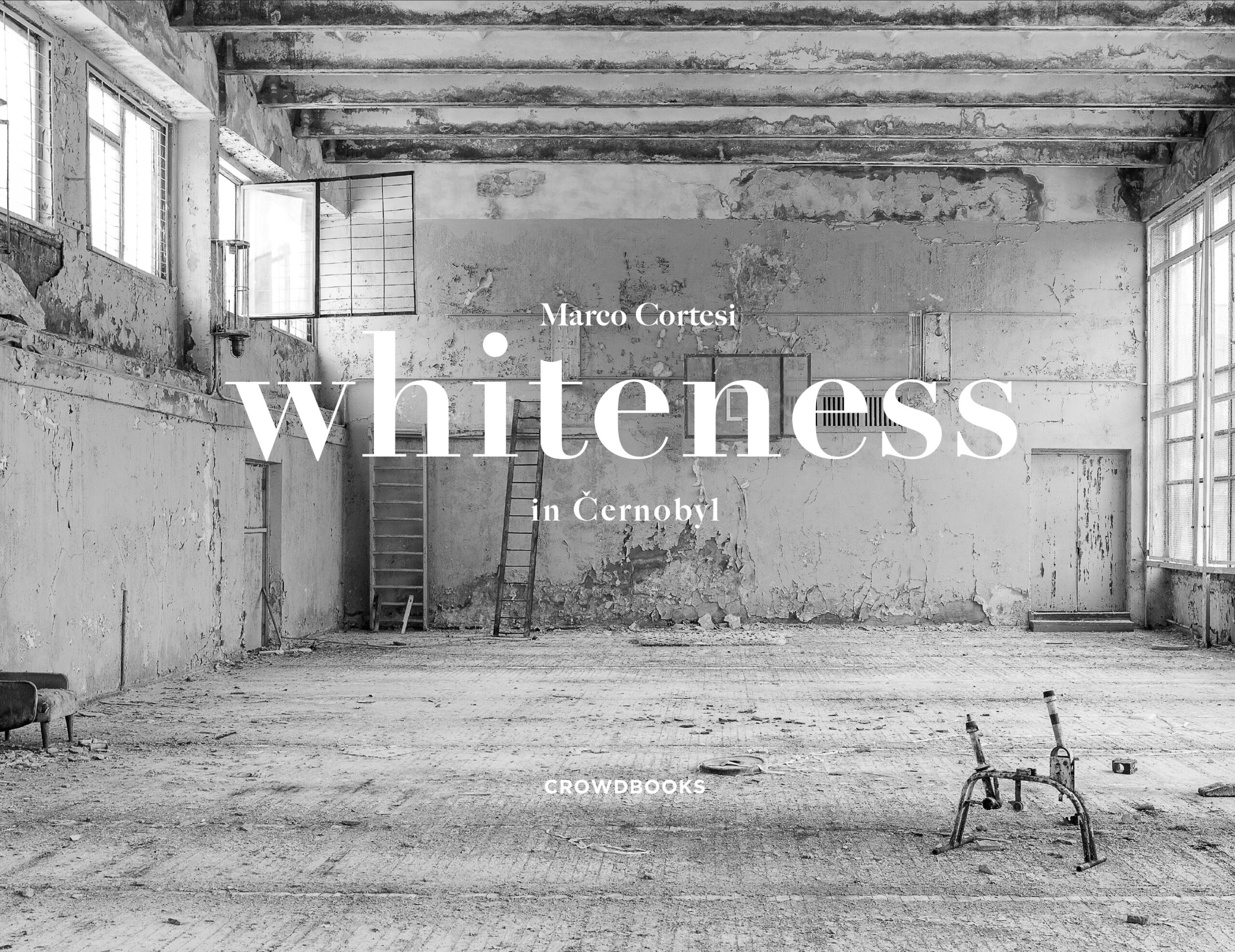
And, honestly, this does not matter at all. I know how to use Google Translate when I need context. And this book is not about the text. This is a book of remarkable, poignant, insightful, and often heartbreaking images that document the remains of tragedy.
The text, by Swiss geographer Stefano Agustoni, begins:
Un viaggio fotografico nella zona di alienazione de Chernobyl, un immersione visiva nel territorio che piu fu colpito dal tragico incidente nucleare del 1986, nello stile di un classico reportage “on the road.”
I cannot speak to the stylistic grace or erudition of Agustoni’s prose (which I am sure is wonderful), and I am sure I’m missing connotations and subtleties of meaning throughout the book, but I can get close enough. A rough translation of the opening tells me exactly what I’m holding:
A photographic journey into the Chernobyl exclusion zone, a visual immersion in the area that was most affected by the tragic nuclear accident of 1986, in the style of a classic on the road reportage.

A bit later, Agustoni writes:
Ovunque regna un silenzio sinistro, un’immobilità sospesa carica del ricordo del grande disastro. Il colore bianco domina in molte immagini, e nel volume stesso, come a sottolineare da un lato la repentina scomparsa della popolazione, e dall’altro l’annientamento e la cancellazione di luoghi oggi sopraffatti dalla natura. Il ricordo preme, si rivela ovunque e la narrazione evoca con rispetto le vittime di questa assurda tragedia.
Which translates as:
Everywhere, an eerie silence reigns, a suspended stillness heavy with the memory of the great disaster. The color white dominates many images, and the book itself, emphasizing, on one hand, the sudden disappearance of the population and, on the other, the annihilation and erasure of places now overtaken by nature. Memory presses in, revealing itself everywhere, and the narrative respectfully evokes the victims of this senseless tragedy.
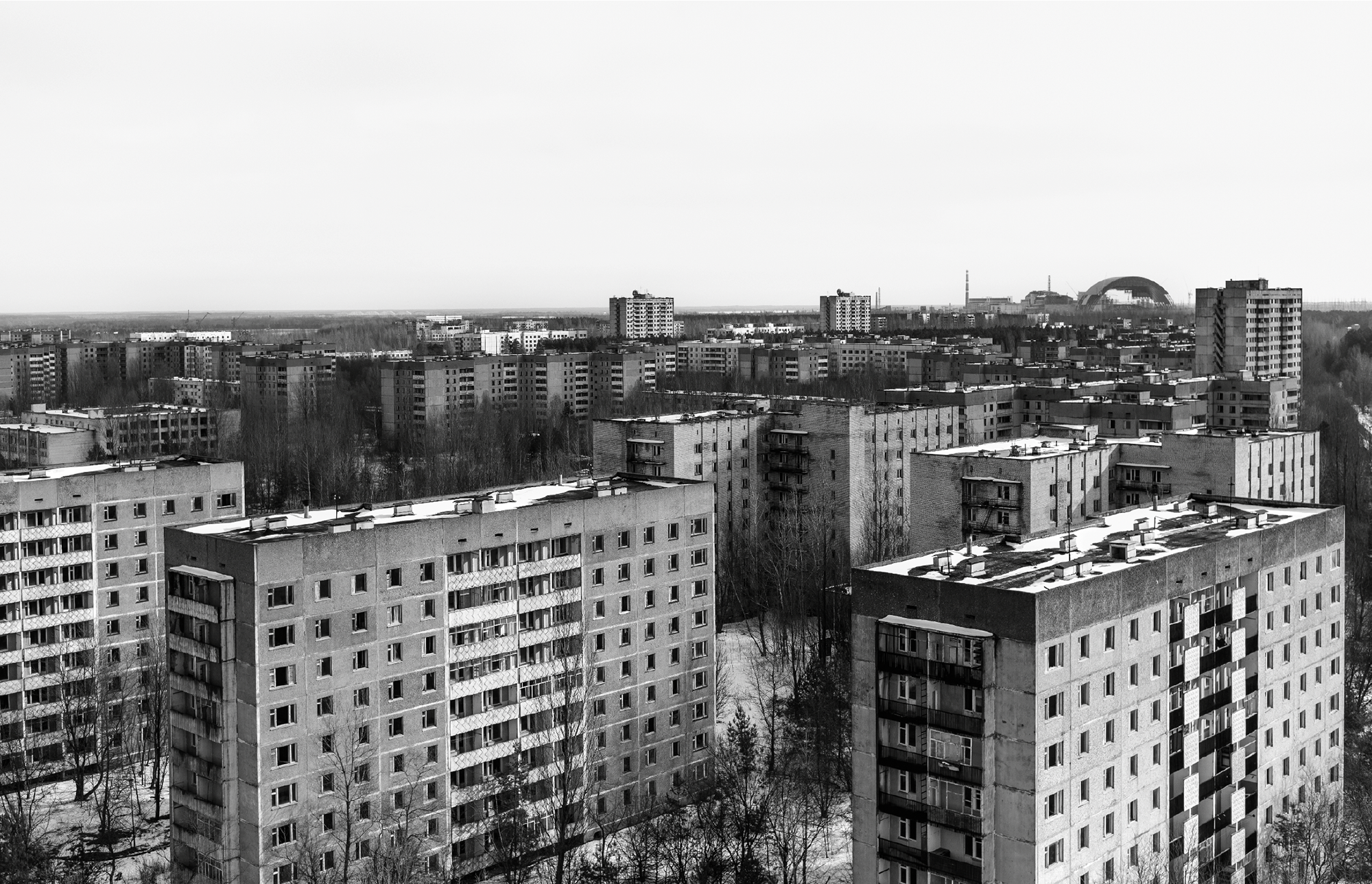
Whiteness in Černobyl contains 60 images, all of them in black and white, printed on ivory paper. The book has an unusual orientation to the spiral binding inside a hardcover, which requires you to turn the book so you flip the pages upward instead of right to left. As the result is a bit slower and a bit more contemplative viewing, this is an effective display.
The book begins with an image of snow covering some bushes, moves next to an ice-covered road, and finally brings us to a memorial in front of Reactor Number Four. There is a narrative to our arrival at Chernobyl which sets season and tone.
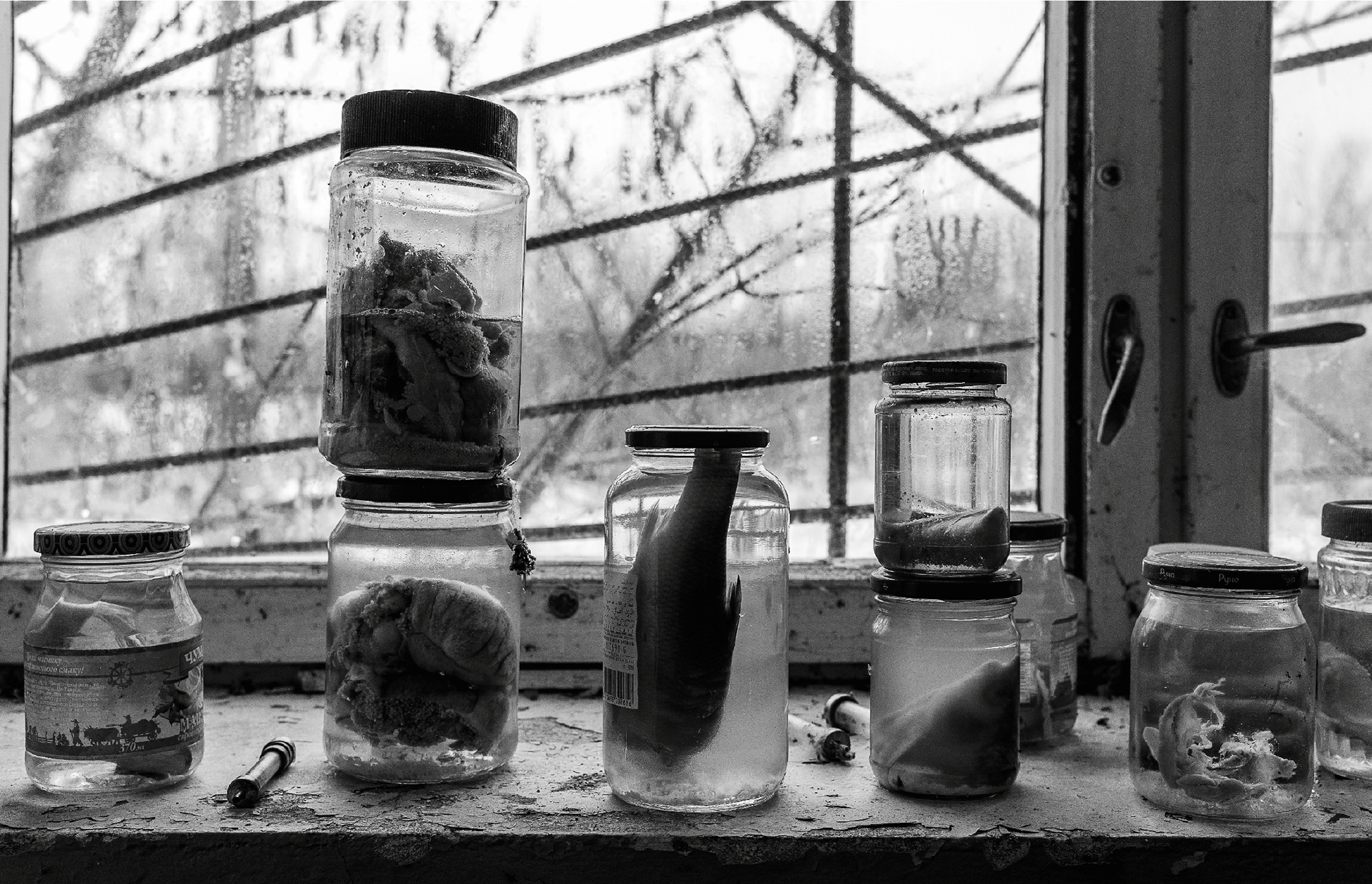
Throughout the book there are interior and exterior shots, closeups and wide shots, all of which articulate and bear witness to the cold and desolation and emptiness of the contemporary Chernobyl.
Some images, such as a sea of discarded face masks, take your breath away.
There are images of empty gymnasiums, empty apartment complexes, trees growing through steps in front of a building. There is an abandoned Ferris wheel at an amusement Park, abandoned rooms in music schools, what appears to be a convenience store or café, the laundry inside a hospital.
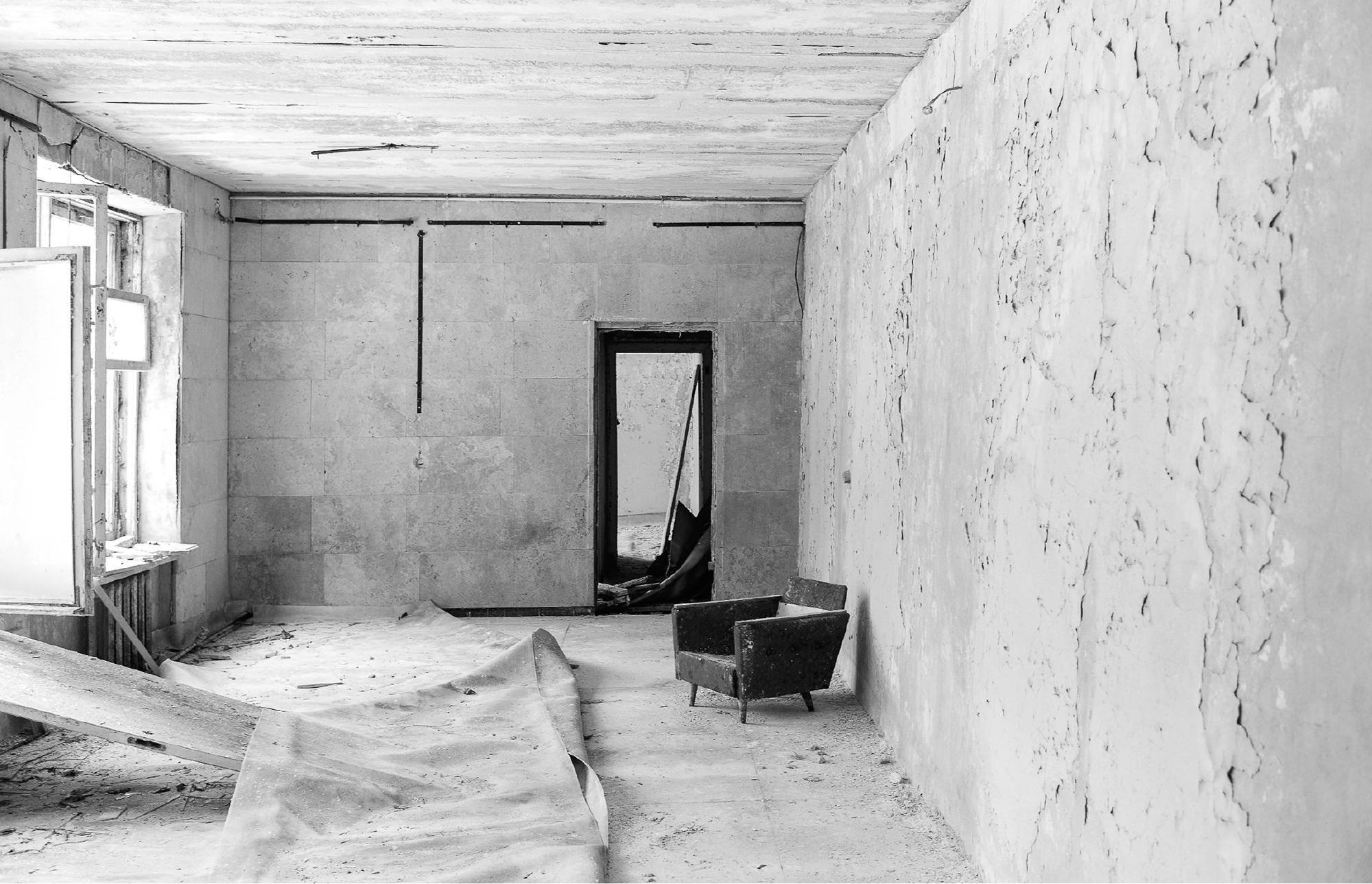
Everywhere there is evidence not only of an immediate evacuation, but of the way that time and the elements can make disarray both nostalgic and gut wrenching. Think of empty bassinets in a maternity ward placed in front of a wall with peeling paint.
The majority of the pictures have no people, despite the size of the infrastructure, emphasizing the size of the evacuation and the size of the loss. But then, about halfway through the book, an old woman appears, first on her own, then tending to some chickens. Then, there is an image of an old man in front of a house. We see his weathered hands and her upward glance. However, I do not see any hopefulness here. I do not think the narrative is one of healing and return. What I see are people who either refused to leave or came back to what they considered home, despite what it is. Their images, for me, are filled with both integrity and loss.
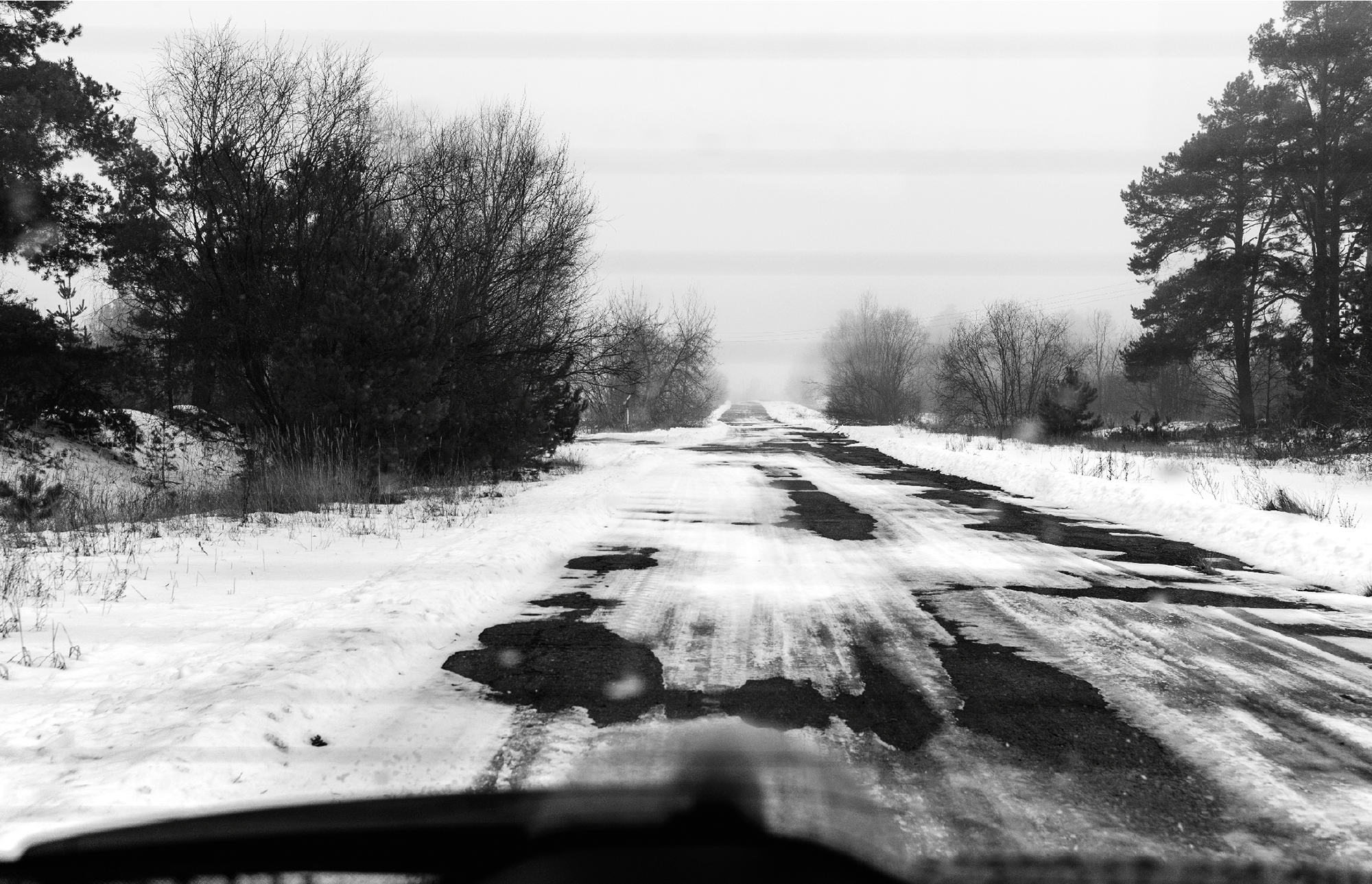
At one level, Whiteness in Černobyl speaks to the snow, the coldness, and the desolation of the season when these images were made. At another level, Whiteness in Černobyl is a metaphor for blanketing erasure.
Each of these images is evocative. Cortesi is a Swiss documentary photographer and photojournalist whose work spans from images of Kiev to the Balkans, the Black Sea, Arctic Foxes, the Occupy Wall Street movement, the Verzasca Dam as well as elsewhere. And his talents in this genre are in full display here, inside an aesthetic which says the unadorned image is the most powerful way to give evidence power.

Geographer Agustoni gets to the point when he concludes his introduction this way:
Accidents are always somehow imagined, represented, and narrated. Science and art, each in its own ways and with different purposes, simulate accidents: the former to prevent them, the latter to exorcise them. They intersect when both posit the possibility of an accident as unavoidable; they diverge or distinguish themselves because science exposes the rationale of the possible or actual disaster, while art exhibits its fascination.
Photography, perhaps more than many other mediums, is an artistic approach that succeeds in this purpose. The photographs in this book, on the one hand, encapsulate historical time by freezing the post-accident moment; on the other, they seem to unleash the forces of deep time that we have embedded in a complex and sophisticated technological apparatus that is not, for this reason, invulnerable or free from criticalities.
Whiteness in Černobyl is a remarkable, sad book. Photography can imply and remember as well as show, and that doubling is a complicated emotional call.

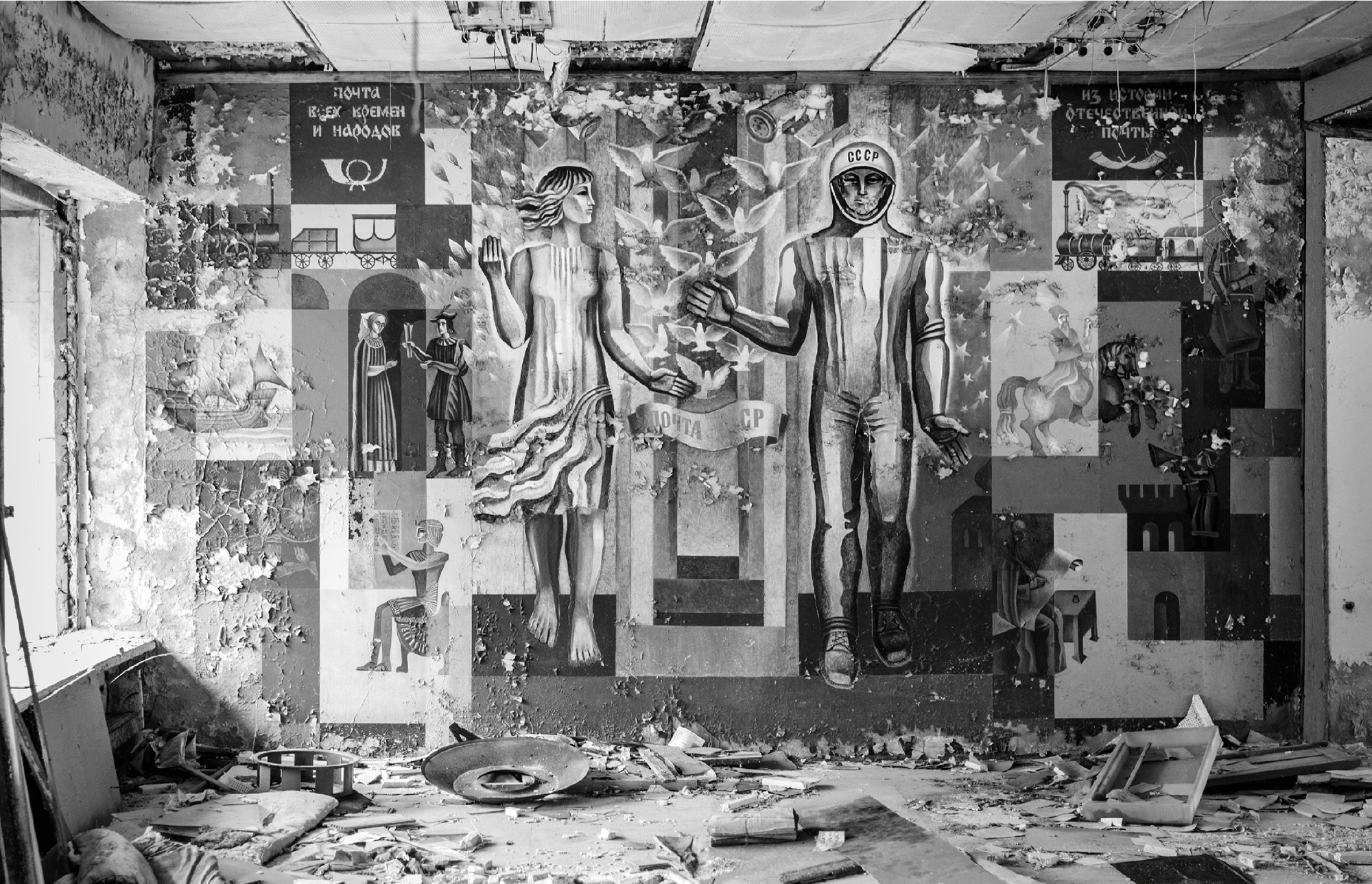
A note from FRAMES: Please let us know if you have an upcoming or recently published photography book.



